InStat have recently completed a scientific analysis of penalty taking. We analysed 91,000 penalty shots from our database from 2009 to the end of August 2018 (one of the most in-depth analyses of penalties ever undertaken). The penalties analysed were from across the World of football, both male and female in leagues and competitions from all over the World, both club and international. The analysis has thrown up some very intriguing information perhaps the most interesting being related to the penalty shootout analysis.
Below I discuss some of the findings with regard to;
- The toss
- Who should take a penalty
- The run-up
- Where to aim
The toss
There has been a lot of discussion about the unfairness of penalty shootouts in recent times. Some studies found the advantage of going first could be as much as 60/40 in favour of the team that shoots first. Which led to some suggestions that the most important part of a penalty shootout was actually the toss. The Carabao Cup, amongst others, even went as far as experimenting with the ABBA pattern of penalty taking last season to remove the perceived advantages of going first, before abandoning the experiment due to fan feedback.
However, InStat’s analysis of over 2,000 penalty shootouts, a much larger sample than the original study which first found the advantage, suggests the difference is negligible. Shooting first still gave a slight advantage, leading to a win in 51.48% of cases, but the advantage is close to insignificant. The question then must be if there is any need to change the system at all? Or, since we do not have enough data to analyse the ABBA system in the same depth, whether it is actually even any fairer.

Who should take the penalty?
First things first, you should score a penalty. The study found that almost exactly three in every four penalties are scored (75.49%). But there are subtleties which can improve your chances ever so slightly (or indeed make them worse).
The first thing you need to do is choose the right taker and unsurprisingly it shouldn’t be your goalkeeper. In general, forwards & central midfielders get the best results. Central defenders are the second most likely to miss the target altogether.
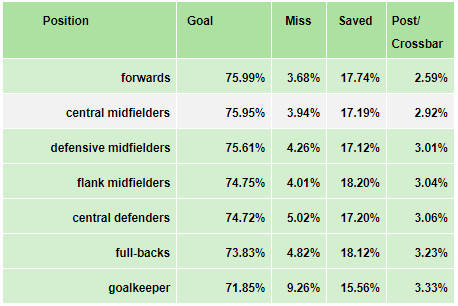
Experience helps also, all top four categories of penalty takers fall into the over 30 bracket.

The study also found that those who scored regularly from open play were more successful at taking penalties than those that didn’t and that there was little difference between left and right footed kickers.
The perfect penalty run up
The analysis also came to the following conclusions. When taking a penalty in order to increase your chances the taker should;
- Look at the keeper, not the ball
- Take more than 5 steps (and avoid taking 5 exactly),
- Focus on accuracy over power
During the run-up it is better to look at the goalkeeper, not the ball. The conversion chance increases almost by 7%, standing at 75.96%.

Longer run ups lead to significantly higher success rates, run-ups with over five steps were found to be the most accurate by far, but it comes with an interesting warning to never to take exactly five steps as it has by far the worst return of all.
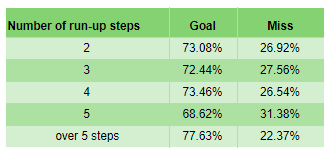
The study also found that success rates dropped when the penalty was hit with a lot of power (down to 71.89%) and takers should avoid running either very fast or very slow in the lead-up.
Where to hit it?
Finally and perhaps most importantly. Where should you aim the penalty?
If we look at the goal in five parts, top left, top right, bottom left, bottom right and straight down the middle then we see some interesting trends.
The top left-hand corner is the best place to hit it. It’s hardly ever saved (0.17% of the time) so if it’s on target, it goes in. However, it’s the second riskiest shot in terms of missing the target altogether (not so important in a shootout, but worth nothing for an in-game penalty perhaps, where rebounds are an option).
Similarly, in the top right-hand corner it’s rarely ever saved (0.43% of the time), but it’s a shot that’s missed completely or hits the crossbar far more often and is the second worst place to hit the shot as a result.
Low to the right corner is the second best option, it increases the chances of being saved significantly (8.07%), but reduces the chances of the target being missed completely significantly also. Low to the left corner is a similarly good option for the same reasons.
The worst possible place to hit it is down the middle. Although surprisingly few of these penalties are saved a whopping 1 in 5 penalties struck down the middle hit the crossbar.
The study also analysed a specific subset of penalties, those hit close to the post. It found that the scoring rate was only marginally improved but chances of missing or hitting the post increased significantly. So it’s best to aim for the sides, but not too far into the corner either.
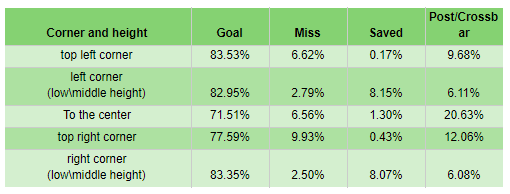
If you look at it in terms of where to hit it relative to the keeper there’s an obvious winner. Over the left shoulder is by far the best target. However over the right shoulder is the worst. One caveat to this is that as it’s an average, a large majority of the goalkeepers will be right handed thus skewing results that way. So it may be worthwhile finding out what hand the opposition keeper prefers before you follow through on this one.
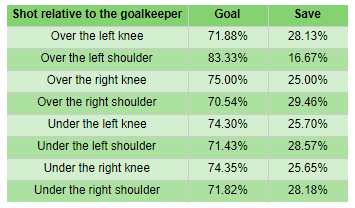
Should you have any further queries about these or other findings please don’t hesitate to contact me.
If you love tactical analysis, then you’ll love the digital magazines from totalfootballanalysis.com – a guaranteed 100+ pages of pure tactical analysis covering topics from the Premier League, Serie A, La Liga, Bundesliga and many, many more. Get your copy of the FIRST of two December issues for just £4.99 here or preorder the SECOND of the December issues with an annual membership right here.

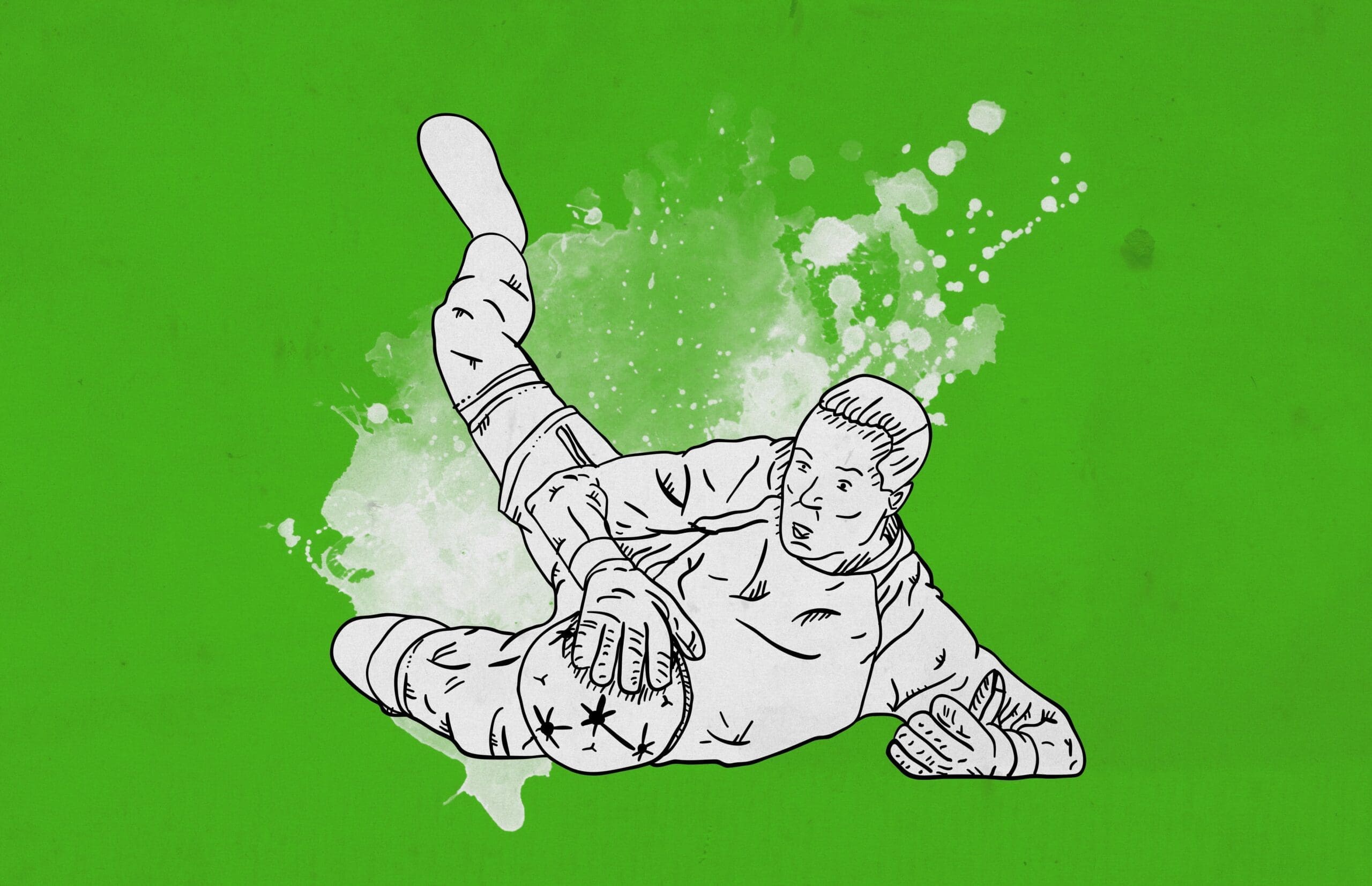




Comments